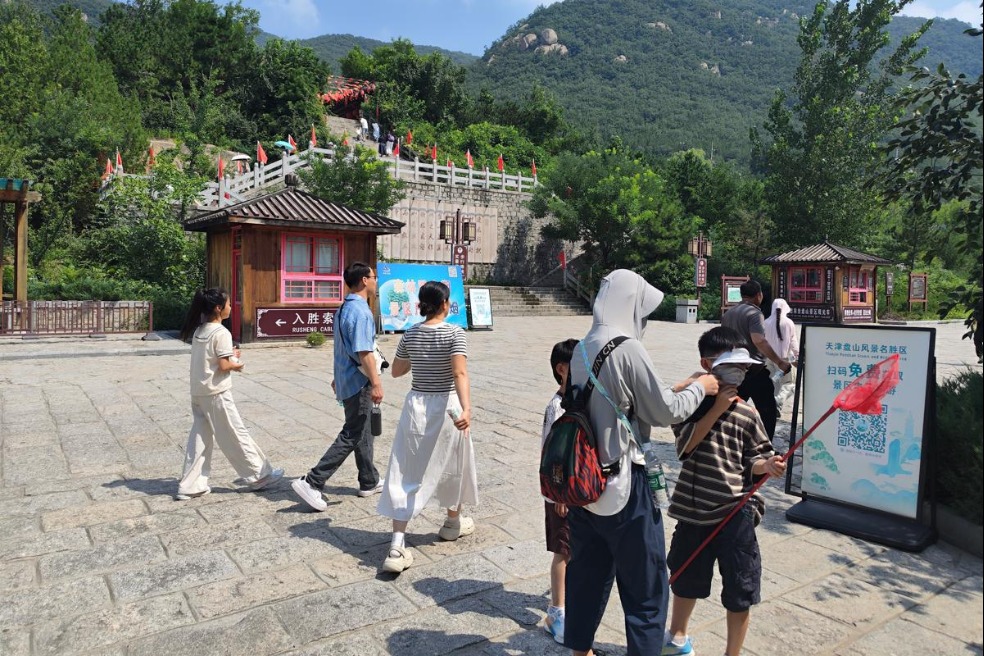Nanotechnology limits pushed

China has made several breakthroughs in cutting-edge nanotechnology in the past five years that will have significant applications in electric vehicles, industrial printing and public health, scientists said on Wednesday.
Nanoscience is the study of materials on the scale of nanometers-a unit of measurement that is a billionth of a meter. At such a tiny scale, the properties of materials are often drastically different from those at larger sizes.
Materials that are brittle can become incredibly strong, and compounds that are chemically inert can become powerful catalysts. Manipulating these novel properties will lead to a wide range of products, from batteries to water filtration systems.
In recent years, China has created a lithium-ion power battery capable of safely storing 300 watt hours per kilogram of mass, which could power a more than 500 kilometer trips in the EV 200 electric sedan produced by Beijing Automotive Group Co, said Wang Chen, a researcher from the National Center for Nanoscience and Technology.
This battery's energy density is on par with the latest battery used in Tesla's new Model 3 sedan, which has one of the cheapest and highest energy density cells on the market, according to Tesla and Panasonic, the battery's manufacturer.
Chinese scientists are now optimizing the new battery in preparation for vehicle demos, said Wang, adding that the Chinese Academy of Sciences has partnered with more than 30 battery and electric vehicle companies to introduce the new battery into the market.
At the same time, China has used nanotechnologies to make breakthroughs in the next generation of rechargeable batteries, namely lithium-sulfur and lithium-air batteries, said Li Hong, a researcher at the Chinese Academy of Sciences' Institute of Physics.
"For decades, the United States and Japan have held key patents and technologies on lithium-ion batteries," said Li. "But China can keep up with them or even take the lead in fields related to the next generation of rechargeable batteries."
Compared with lithium-ion batteries, lithium-sulfur batteries use sulfur rather than expensive alloys for electrodes, making them cheaper, lighter and able to store almost double the energy for the same mass. China has created a world-leading lithium-sulfur battery capable of holding 609 Wh/kg, Li said.
The lithium-sulfur battery has been successfully tested in commercial solar powered drones, he added. China has also formed its first lithium-sulfur battery production company, Zhongke Paisi Energy Storage Technology Co, located in Dalian, Liaoning province, and it has recently finished building the world's largest production line for the new battery.
The lithium-air battery takes innovation further by using oxygen from the air for electrodes. It has all the benefits of lithium-sulfur batteries plus being even more environmentally friendly. Chinese scientists have produced a lithium-air battery that can store 780 Wh/kg, Li said.
Although the technology is relatively new and still needs more testing, "it will significantly increase China's technological and engineering prowess in the global race for smaller, longer-lasting, more powerful batteries," Li said.
New nanomaterials also helped China develop a new printing method that is both cost-efficient and does not produce corrosive or poisonous waste, said Song Yanlin, a researcher from the Institute of Chemistry from the academy.
The new technology will help transform China's industrial printing industries, whose turnover was $180 billion in 2016, to be completely environmentally friendly, he said. It will also reduce the harmful chemicals used to etch prints on electronics.
Nanomaterials can also be used to create portable water filtration systems for more than 1,200 nomadic families in North China's Inner Mongolia autonomous region, said Fang Shibi, a researcher at the Institute of Chemistry.
The new nanomaterial used in the water filters can effectively purify the arsenic and fluorine, and the nomads need only change the filters once per year, making clean water cheap and more accessible, he added.
- Fresh rainstorm warning issued for Tianjin
- Hainan Island Carnival opening ceremony lights up Haikou
- China's Hebei restores power, roads after heavy rains
- Global influencers explore beer city at Qingdao WCNA
- Heavy rainstorm leaves three dead, four missing in Hebei resort
- Ethnic integration on the grassland






































